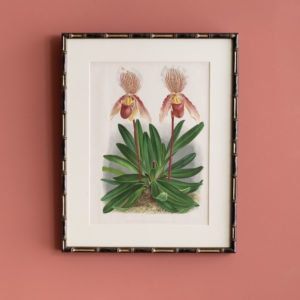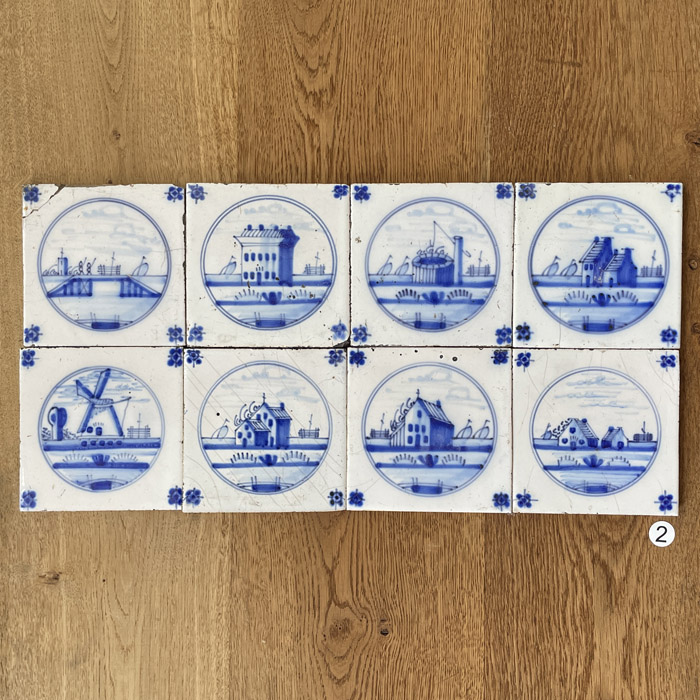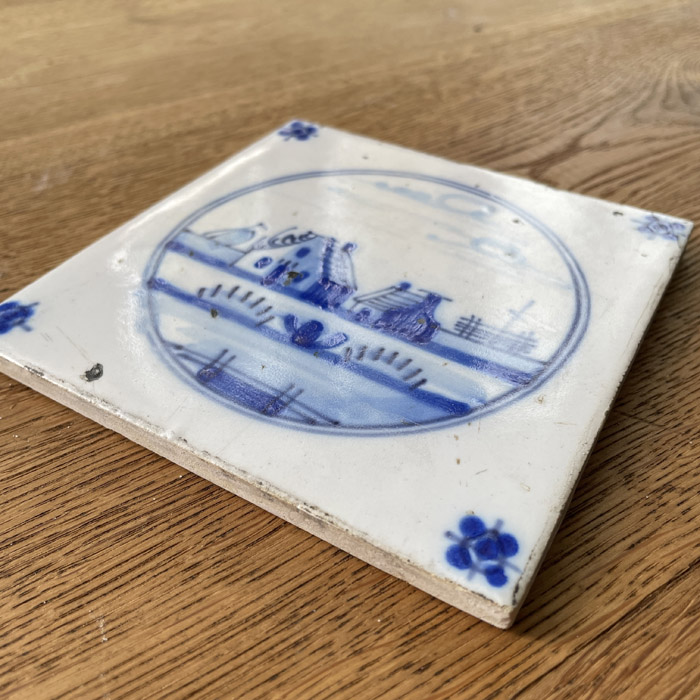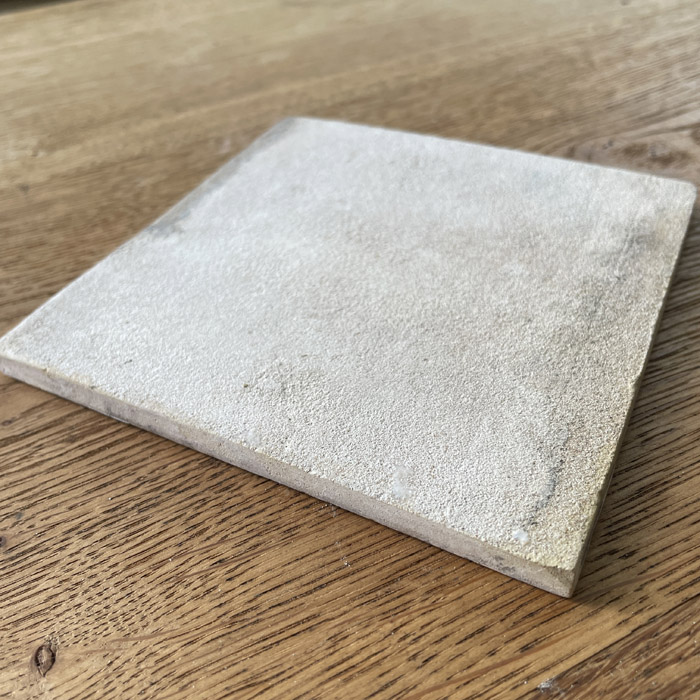Archived Stock - This item is no longer available
A set of eight hand-painted Delft 5″ glazed ceramic tiles
each painted with a roundel depicting vernacular buildings in a Dutch landscape, with stylised flowerheads to each corner,
SOLD OUT
A set of these characteristic blue and white tin-glazed tiles make a great splash-back or feature wall in a kitchen or pantry.
Delft became the centre of the production of these tiles from the 17th Century when the blue and white technique and styles of ornament were imported from China by Dutch merchants and emulated. Soon the Dutch were producing tiles depicting scenes from the world around them and competing tile manufacturers sprung up around Delft. The painters were deft in the speed they could paint and also became inventive with Biblical scenes, flowers, bawdy encounters and puns appearing in their work – these are highly collectable.
This set of tiles comprises eight differing designs. We have a few other sets from the same source – some repeating the same eight designs – again each is hand-painted – some batches have different patterns to these. Being from the same source, and before any sell, a total of 72 of these tiles is available at the outset: approximately 16square foot. Search “Delft” above to see remaining batches.
Recently Viewed Items
-

Linden Botanicals,
£175 eachLinden Botanicals,
L’Illustration Horticole, was a monthly horticultural review, founded in 1854 in Ghent, Belgium, by Ambroise Verschaffelt, a nurseryman who specialised in new plant introductions from South America. The lavish illustrations were produced by some of the very best botanical artists and lithographers – A. Goosens, P. De Pannemaeker and J. Goffart. The L’Illustration Horticole although founded by Jean Jules Linden (1817 – 1898) became a collaborative effort of many great horticulturists and field botanists of the day. Jean Linden in his own right was a renowned orchid grower and collector. Each monthly edition featured chromolithograph of botanical prints. Plants such as orchids, camellias, roses and leafy plants such as ferns and palm trees were represented. The magazine’s scope included pictures, descriptions, the history and culture of “the most remarkable plants,” new introductions, horticultural history, botanical expeditions, and accounts of the major expositions and of new works on botany and horticulture as well as garden descriptions and layouts.£175 each



